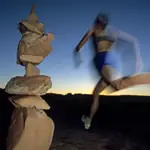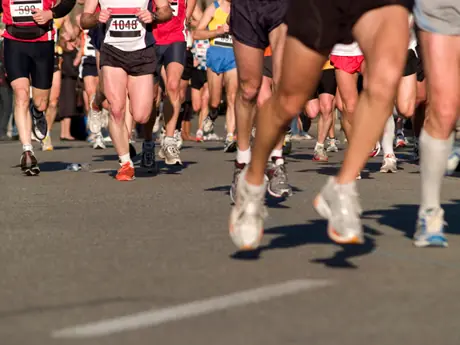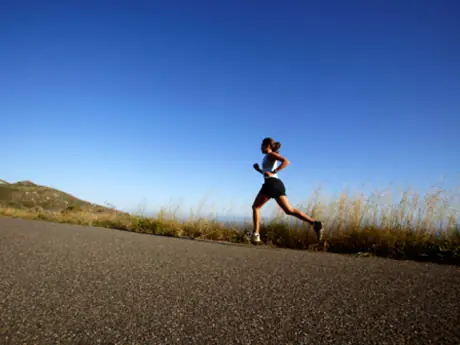
Your senses are heightened when you're in the woods in the dark. You begin to notice things that you might miss in the daylight, things like the sound of the wind in the trees, your own breathing, and at times, complete silence.
Trail running at night is a rush that's sure to break you out of your normal workout routine. Even if you've been on a certain trail a hundred times before, it looks and feels different in the dark.
In reality, trail running at night isn't that dangerous, as long as you follow a few safety tips.
Choose a Nearby Trail
Since your runs will most likely be after work during the week, choose a trail that's close to home for convenience. You don't need a large trail system or park. Running on trails in the dark is more challenging than road running, so you'll get a better workout in a shorter amount of time.For your first few times out at night, it's helpful if you choose a trail that you're already familiar with until you get more comfortable with night running. Don't worry—the urban trails that seemed rather tame during the day will be a lot more adventurous at night.
Don't Run Alone
Simply put, there's safety in numbers.
Be Aware of Your Surroundings
The light from your headlamp or flashlight (see the gear section below) can throw shadows and distort your perception of objects. To make sure you don't trip over rocks and roots in the trail, lift your feet a bit higher than you normally would when you run.
Stay relaxed so your body can react to and absorb any unseen bumps that may threaten to throw you off balance or trip you up. Also, consider slowing down your pace--don't expect to be able to run as fast as you would during the day.
Keep Your Bearings
It can be easy to get disoriented in the dark, so don't venture off the trail. Carry a map if you're unfamiliar with the area.
A small compass can make it much easier to find your way back to the car. Also, a watch will make it easier to keep track of how long you've been running, and when you should turn back.
Gear
Besides the normal running clothes, you'll need a few extras for trail running at night.
Trail running shoes have more stability and traction than their road running cousins, which can make a big difference on rugged terrain.
The Montrail Leona Divide trail running shoes are built with a low volume for a snug fit. They have a similar feel as a road shoe with good cushioning and flexibility, but it's the sturdy midsole and sticky rubber outsole that make them a good choice for trail running.
You'll also need a light. Some runners prefer a hand-held light, while others swear by headlamps. When choosing a flashlight, look for something that's small, lightweight and comfortable to hold.
A headlamp will keep your hands free and allow you to run with your normal arm swing, something you can't do if you're trying to keep your flashlight focused on the ground in front of you. One good choice is the Petzl Tikka headlamp. With batteries, it weights only 2.5 oz., making this small, efficient light a comfortable headlamp for running.
Get ACTIVE on the Go


Couch to 5K®
The best way to get new runners off the couch and across the finish line of their first 5K.
Available for iOS | Android







Discuss This Article